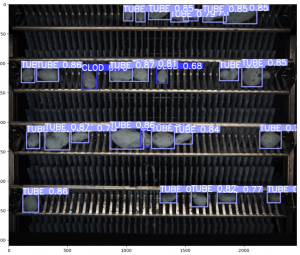
Introduction
We have been working on a new dataset and trained full-sized images, which are around 2448×2048 pixels, using the latest YOLOv9 model. Due to the larger image size, we have achieved an inference speed of around 55ms. If we optimize it using TensorRT as we did previously, we can reduce the inference time to around 25ms. Furthermore, this new model addresses missed detections of tubes and clods and has improved accuracy. For now, the dataset is sufficient for similar scenarios. We request you to test this newer model. The previous inference speed was on cropped images with a size of around 640 pixels.
We have attached the tuberclod.zip, which contains the detect.py script slightly changed, and the model. You can use:
yolo export model=/path/to/Object_detection/image_objectDetection_yolov9/tuber_clodV9.pt format=engine device=0 half=True
